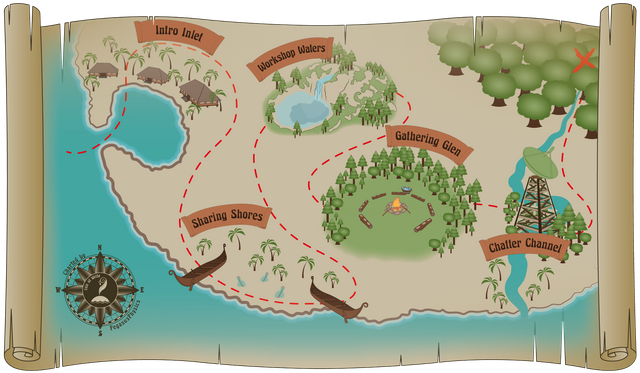Sustainability for Kids: scale

Part 1 | Part 2 | Part 3 | Part 4 | Part 5 | Part 6 | Part 7 | Part 8 | Part 9
Part 10 | Part 11 | Part 12 | Part 13 | Part 14 Part 15 | Part 16 | Part 17
One way we can know decentralized systems work well for problem solving is by testing these systems with computers. So to solve sustainability problems and to find out how best to organize and run an economy to avoid overconsumption, we can look at computer models.
In 1988, computer experts at the Xerox Palo Alto Research Center discovered something interesting. They wanted to set up a system for their computers to maximize processing use, but they weren't sure how to organize it. Maximizing the use of computers is a lot like maximizing the consumption of people in an economy. You don't want people over-using resources or using up more than what's sustainable, and the same goes for computers. These guys didn't want one computer being over-used, drawing too much electricity, maxing out its processing power. They were looking for something sustainable.
First, they tried a centralized system, like a centralized government determining how things should be allocated by making decisions ahead of time. Centralized planning like this is called “command and control (C&C).” But C&C didn't work because the information necessary for making quick decisions overwhelmed the central processing unit.
What they came up with instead was a system called Spawn. Individual computers were each given “money” and programmed to maximize their bank accounts by trading money for tasks. It was a way of coordinating a “use” economy so no one computer would be processing too much or have too much idle downtime.
The computers optimized their own use pretty quickly with no outside direction and no centralized direction, simply by trading with each other in their own “use” market.

To access this 1989 article from Network World Magazine, click here.
The Spawn system was able to organize an economy to avoid overconsumption of resources (like processing time and electricity) that was sustainable through a decentralized structure – the same thing Richard Gregg predicted back in the 1930s. But Stuart Kauffman, a researcher at the Santa Fe Institute, also discovered something interesting. He found that a centralized computer system could work to solve coordination and allocation problems, sometimes.
Sometimes? Yes, but only sometimes.
It all depends on the size and complexity of the system. Centralized coordination, like a centralized economy, is only possible on certain, smaller scales. Centralization and economies, it turns out, are scale-dependent.
Scale is a factor or a variable that we often forget about when trying to design systems or accomplish goals. But scale matters, and when we overlook it, we often create unsustainable situations for ourselves. That's because, in a scale-dependent system, both growth and shrinkage are, themselves, unsustainable! Mathematician Ian Stewart illustrates this idea in his book, The Natural Order: “[A]n elephant the size of a house would collapse under its own weight, and one the size of a mouse would have legs that are uselessly thick.”
And computer models show us that complex, larger scales require decentralized systems. We'll delve into that idea more next time.
This article is one of a series I'm writing for the 30 Day Writing Challenge hosted by @dragosroua. If you want to join, write on a topic that interests you or that you'd like to learn more about and use the tag #challenge30days. As Dragos says, "The key word sequence here is: "write every day."

Think you'd like to wash up on our shore?
The treasure map will bring you right to our door!


I have always been against automatic vote, if you really build relationships with other users, it implies the reading of their materials and live comments on the subject.
But, I understand that it's hard to find free time for this (every day follow updates of friends and participate in discussions). And auto-vote in a sense is an opportunity to say Hello, to express respect for your relationship. Accordingly, if you withdrew from somebody list you have lost the interest of this person to you. So your actions in this case are absolutely correct.
That's great, but it has nothing to do with my post.
She just repeats the same comment over and over in different posts.
Excellent post, thanks for sharing
good........really great
